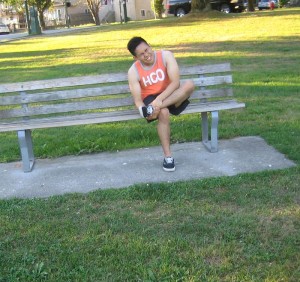A peroneal tendon injury is defined as an issue with the muscles and tendons on the external section of the lower foot and leg. The tendons might be damaged abruptly or steadily impaired over time. In some cases, there are miniature partial tears in the tendon. If there is full tearing of the tendon, it is considered as a rupture.
What are the usual causes?
A peroneal tendon injury can be brought about by the following:
- Overusing the tendon in sports or activities where the foot and ankle roll inwards such as running on sloped terrain or wearing shoes that are worn out on the external heel.
- Abrupt activity where the foot is forced upwards towards the shin
What are the signs?
The usual indications of this injury include:
- Snapping or popping sound at the time of injury
- Pain and inflammation on the external side of the lower ankle or leg.
Management of a peroneal tendon injury

As the individual recovers from the injury, it is recommended to change activity or sport to those that will not aggravate the condition.
The doctor might recommend strengthening and stretching exercises to promote the healing process.
The achiness frequently subsides after a few weeks of home care, but certain cases might take a few months or even longer to fully heal. It is vital to carefully follow the instructions given by the doctor.
Some of the commonly used treatment options to reduce the pain and swelling include:
- Place an ice pack or cold compress on the site every 3-4 hours at 20-minute sessions at a time.
- Perform ice massage on the site.
- Make sure that the ankle is propped on a cushion or pillow while the individual is sitting or lying down.
- Pain medications are usually given and must be taken as instructed.
The muscles can be relaxed and allow easier movement of the leg by applying moist heat.
Proper warm-up and stretching exercises prior to physical activity can avert the injury. It is recommended to perform exercises to strengthen the leg and ankle muscles.
More Information / Disclaimer
The information posted on this page on a peroneal tendon injury is for learning purposes only. Learn to recognize the signs and how it is managed by taking a standard first aid course with Red Deer First Aid.
